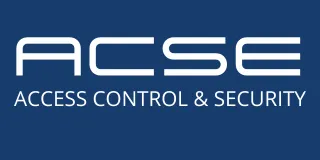
The Importance of Site Planning in Automated Gate System Design
Designing an automated gate system involves much more than selecting the right operator or gate materials. A successful installation begins with a well-thought-out site plan. Site planning ensures that the gate system integrates seamlessly with the property, functions efficiently, and complies with safety standards like UL 325 and ASTM F2200.
Whether you’re working on a residential, commercial, or industrial project, careful site planning can prevent costly mistakes, streamline installation, and deliver a durable, user-friendly system. Here, we’ll discuss why site planning is critical and outline the key steps to get it right.
Why Is Site Planning So Important?
Enhances Functionality:
A well-planned site ensures the gate system operates smoothly for both vehicles and pedestrians, minimizing delays and optimizing traffic flow.Prevents Installation Errors:
Poor planning often leads to misaligned gates, interference with utilities, or inadequate space for vehicles to maneuver. Site planning identifies and mitigates these risks before installation begins.Ensures Compliance with Safety Standards:
Proper planning helps incorporate the necessary safety features and ensures compliance with UL 325 and ASTM F2200, protecting users from potential hazards.Optimizes Aesthetics and Integration:
Site planning allows the gate system to blend harmoniously with the property’s architecture and landscaping, enhancing its visual appeal.Saves Time and Money:
Anticipating challenges early reduces the likelihood of delays, redesigns, or added expenses during installation.
Key Considerations in Site Planning
1. Site Survey
Conducting a thorough site survey is the first step in planning. This involves:
Assessing the Terrain: Identify slopes, uneven surfaces, and obstructions that could affect the gate’s movement or alignment.
Mapping Utility Lines: Locate underground utilities like gas, water, and power lines to avoid damage during installation.
Measuring Space: Ensure there’s adequate clearance for the gate to open and close without obstruction. Swing gates, for instance, require more space than sliding gates.
Identifying Traffic Patterns: Observe how vehicles and pedestrians currently move through the area to determine the best placement for the gate.
2. Gate System Type
Different types of gates require different site conditions:
Sliding Gates: Ideal for properties with limited space, as they move parallel to the fence line.
Swing Gates: Require ample room to open inward or outward without interfering with vehicles or landscaping.
Vertical Lift Gates: Suitable for industrial or high-security sites where space is constrained but heavy-duty access is needed.
3. Environmental Factors
Environmental conditions can impact the durability and functionality of the gate system:
Weather: Areas prone to extreme temperatures, wind, or heavy rain may require additional weatherproofing or hydraulic operators.
Soil Conditions: Poor soil stability may necessitate reinforced foundations for the gate and operator.
Incorporating Safety into Site Planning
Safety is a non-negotiable aspect of gate design. During site planning, consider the following:
Entrapment Protection: Ensure sufficient space between the gate and adjacent structures to prevent pinch points or reach-through hazards.
Access Control Placement: Position keypads, card readers, or intercoms at a safe distance (at least 6 feet) from the gate’s moving parts to protect users.
Clearance for Emergency Vehicles: Confirm that the gate design accommodates fire trucks or ambulances, and plan for emergency access devices like Knox boxes or key switches.
Visibility and Signage: Provide clear warning signs about the gate’s movement, and ensure the gate area is well-lit at night.
Designing for Convenience and Efficiency
A successful gate system isn’t just safe—it’s also convenient to use. Here are a few tips to enhance functionality during site planning:
Vehicle Turnaround Space: Plan for enough room for vehicles to safely turn around if access is denied. This is especially important in gated communities or commercial sites with high traffic volumes.
Pedestrian Access: Include separate pedestrian pathways to prevent foot traffic from interfering with vehicle movements.
Integrated Systems: Design the site to accommodate other security features, such as surveillance cameras, alarm systems, or additional access control points.
Avoiding Common Pitfalls in Site Planning
Inadequate Space for Operation:
Ensure the gate has enough room to fully open and close without obstruction. Swing gates, for example, need space that is free from landscaping, fencing, or parked vehicles.Overlooking Utility Clearance:
Failing to account for overhead power lines or underground utilities can delay installation and increase costs.Ignoring Long-Term Maintenance Needs:
Make sure there is sufficient access to gate operators, hinges, and safety devices for future servicing.Neglecting Traffic Flow:
Poorly planned gate placement can create bottlenecks, especially during peak hours.
Steps to Create an Effective Site Plan
Gather Information:
Survey the site.
Document property boundaries and dimensions.
Consult local building codes and HOA regulations.
Create a Scaled Drawing:
Map out the property and the gate system, including operator placement, access controls, and clearance requirements.
Involve Stakeholders:
Collaborate with property owners, contractors, and gate system designers to ensure the plan meets everyone’s needs.
Test the Plan:
Use markers or digital modeling to simulate the gate system’s placement and operation. Adjust the plan as needed based on feedback.
Conclusion
Site planning is the foundation of a successful automated gate system design. By thoroughly assessing the site, addressing safety concerns, and anticipating challenges, you can ensure the gate system operates efficiently, integrates seamlessly, and meets safety standards. Proper planning not only prevents costly mistakes but also enhances the overall experience for end-users.
At ACSE, we specialize in designing automated gate systems that prioritize safety, efficiency, and aesthetics. Contact us today to learn how our customized site planning services can elevate your next project!

